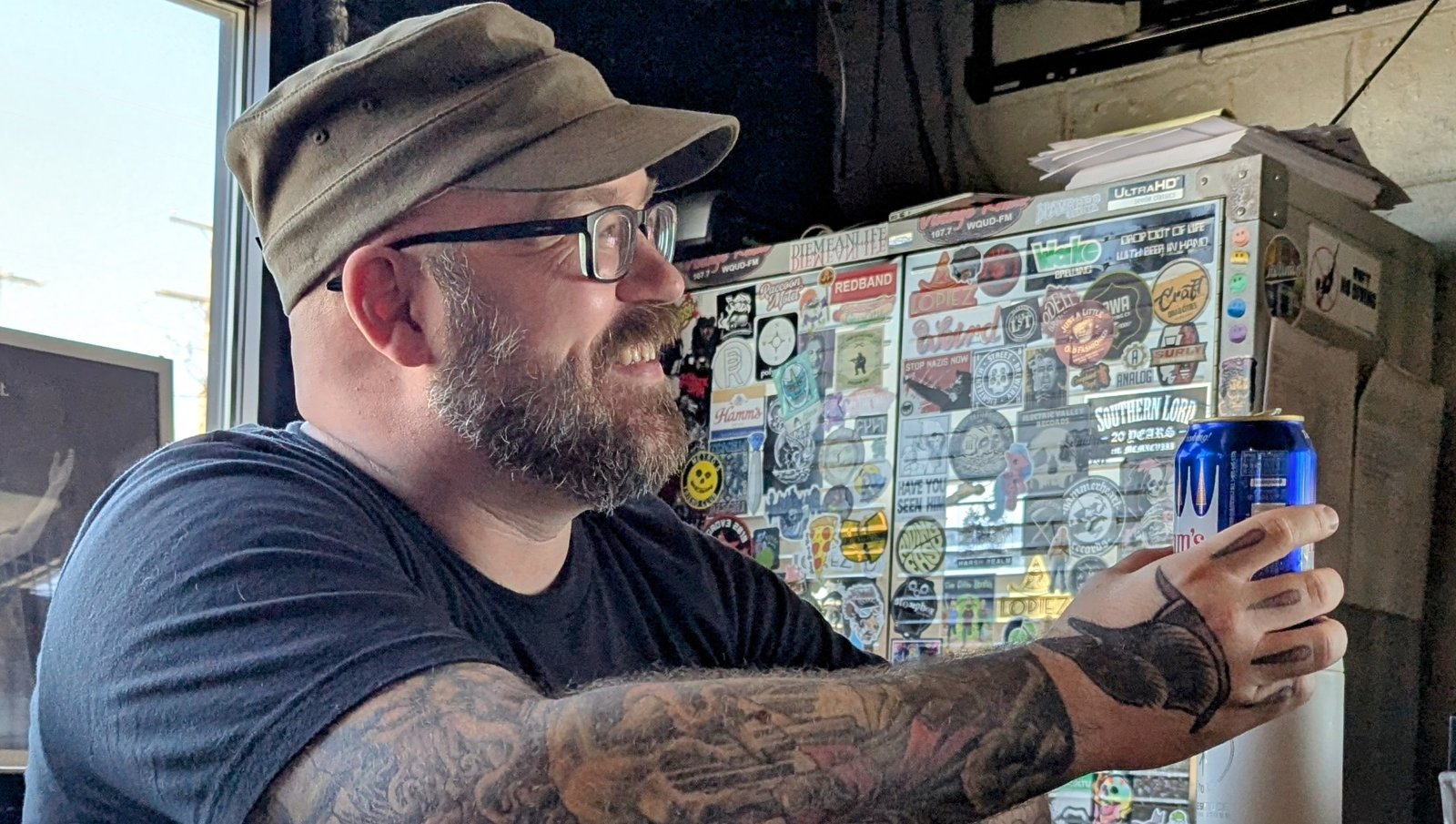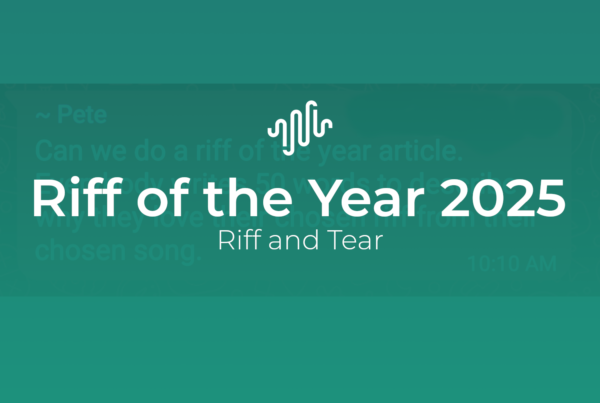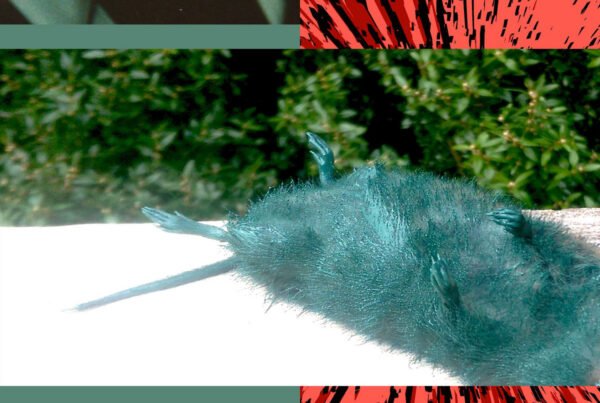I turn 40 this year. Somehow, 40 always seemed like a landmark year. I think I attended an ‘over the hill’ party for a grown-up turning 40 when I was a kid. Images of a yellow napkin with the number ’40’ in green, shiny, purple streamers dancing around the digits come to mind, as well as the jeering and beaming adults in the room having a laugh at someone tuning another year older. It is the number in my head for midlife crises, painfully boring khaki slacks, getting into golf, and dying your hair. It is also the age of homeownership, having a steady, decent job, and carrying a sense of maturity about yourself. So far, none of those things have happened, and I am not overly concerned that they will. Those things all sound foreign, boring to a point, but like some distant memory of what aging is supposed to look like.
But, most of the people my age that I call friends aren’t exactly like that. Some are more well off than others, but I don’t really think any of us know exactly what we are doing with the same self-assuredness of the adults I remember. They probably didn’t know what they were doing, either. Materially, the older generations are better off, but fuck it. We ball.
Looking back to the start of the hill, there are hundreds of memories, maybe thousands. I’ve killed enough brain cells going up that hill that things blur together, but somewhere there is a sequence that I can follow. Places I have lived, worked, gone to school, and relationships I have been in help, but for the vast majority of that time, music has been an essential part of my daily life. In junior high and high school, and even a good chunk of college, what I listened to was a kind of identifier of who I was, or was projecting to be. My music fandom is and has been my chief interest, outlasting and outpacing every single other hobby or interest my brain has collected over the years, like a safety blanket that at times was a cozy sweater and others was a battle vest.
Now, I am too far in to get out. I have explored so many styles of music that I have become an addict. People my age have, statistically, found their favorite artists and sounds and stuck with it. I seem to be incapable of that, each new week a new opportunity to hear something new, find a new rabbit hole, and become awestruck again. I’ve been that way since I got a Walkman at around 12. So, when an album stands out and sticks with me for years or even decades at a time, it is because it hit hard, obsession worthy, maybe wardrobe changing, maybe life changing.
This list of 20 albums was hard to compile. At first, it was 20 of my favorite albums of all time, but that wasn’t really the assignment, or at least how I interpret it. This is The Noise That Made Us, and I am not done being made. So, I think it is more appropriate to say this is a list of 20 albums that changed how I thought about music, expanded my tastes, and kept feeding my addiction to discovery. These were all pulled from a list of 365 albums that were important to me. I made that arduous list with the half-hearted idea of posting an album a day on social media leading up to my 40th birthday. A few weeks in, I got sick of social media, started limiting my time on it, and deactivated my Facebook as a start. So, in a way, this is a super condensed version of that list, but with more focus.
These are classics in their genres, gateways to sonic experiences that continue to unravel. For each album on this list, I have devoured dozens of others that correspond, but sadly I couldn’t fit every subgenre and microgenre that I enjoy on here. Each of these albums helped get me to the level of specificity that I have to use words like ‘microgenre’ and ‘nanogenre’ to describe sounds and ideas. Hopefully they inspire some level of discovery in your own music fan journey. This list and any of the reviews or features that I write is just me showing you a cool rock that I found. Thanks for checking it out.
Black Sabbath – Black Sabbath (1970)
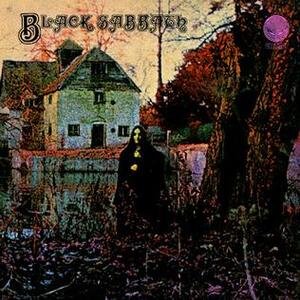
Technically, the first time I heard “Black Sabbath” by Black Sabbath was on a compilation called We Sold Our Soul For Rock & Roll. I don’t count ‘greatest hits’ albums as albums. It is probably a personal problem, but I like hearing full-length albums to hear where the artist was at the time. I mostly listen to music by the album. Playlists are fine. Shuffle is fine. A whole album, though, is like a movie or a book, something to consume and absorb and study.
My friends in 6th grade recommended Black Sabbath to me. I found that CD at Wal-Mart or something, and had it with me one rainy day. My mom was taking me and my brothers around running errands. We got to the grocery store, and she took my brothers in while I stayed back with my portable CD player and stared into the gray parking lot, drops of rain beading on the window, and hit play.
The sounds of more rain, church bells, and thunder filled my ears, and Tony Iommi’s slow, three note riff lead me into the most terrifying song I had ever heard. To be fair, at that point in my life the most terrifying song I had ever heard was “The Devil Went Down To Georgia,” so there wasn’t a lot of competition. I didn’t know music could create fear like that.
That was all it took, scaring the shit out of a child in a parking lot. I was hooked. I had to know what else music could do, and it was all downhill from there. I got into lots of classic rock, as recommended by friends and uncles, got into nu-metal, started wearing band t-shirts, and never stopped exploring.
Black Sabbath never went far, though. You always remember your first love. I played We Sold Our Soul For Rock And Roll many, many times. I have since listened to every Black Sabbath album and become so familiar with the interplay and dynamics of the first four Black Sabbath albums that each member’s playing style lives in my brain, and very few bands have ever successfully duplicated the way Geezer Butler, Bill Ward, and Tony Iommi interact and land that idyllic sound with Ozzy at the mic.
Their first album, Black Sabbath remains my most played. No other doom metal band has used a harmonica as successfully as on “The Wizard.” The almost ten minute “Wasp/Behind The Wall Of Sleep/Bassically/NIB” working through the heavy psychedelic movement to what became heavy metal like a living time capsule of that transition culminating with the “NIB” riff never fails to thrill. There is a reason Black Sabbath is often imitated and lives in the hearts of most every metalhead, and it all starts on their eponymous album with their eponymous song.
That moment in the parking lot was pivotal, and in the time since I have started this project, Ozzy Osbourne has passed. Though I knew it was coming, the world still feels surreal without Ozzy. Like David Bowie, Prince, Leonard Cohen, and Johnny Cash, Ozzy’s departure from the mortal plane feels like a pillar of music has collapsed, a lynchpin in the universe gone. R.I.P. Ozzy. If I could add up all of the hours I have listened to music and put it in a pie chart, your voice would be the biggest piece.
Deftones – White Pony (2000)
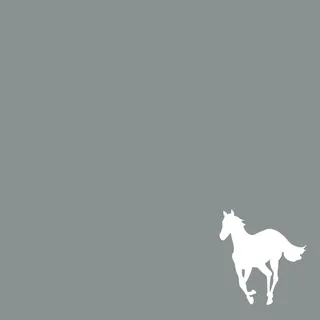
Nu-metal came of age when I did. Shortly after hearing Black Sabbath, we all heard Korn. Followed by Limp Bizkit, Coal Chamber, Static-X, Rob Zombie, Slipknot (Iowa kids LOVE Slipknot), and Deftones. I can look back fondly on a lot of those bands, but I also loved Godsmack and Staind and Kid Rock. Saying that out loud feels gross, but I was an impressionable teenager with JNCOs, a chain wallet, and the only culture war I knew at the time was the dirties/freaks vs. the preps/jocks.
In full Freaks and Geeks fashion, our high school was segregated by cliques. For as white as it was, it probably would have been segregated by race, too, if we had more than like 5 BIPOCs there. High school mentalities suck, especially in smaller Midwestern school districts with more people in chess club than diversity. So, the wealthier, subdivision kids looked down on the trailer park and poorer farm kids like they weren’t smoking weed, too. This gave the impression, however, that music taste had something to do with it. Those kids had Abercrombie and Fitch, not “People = Shit” t-shirts.
Maybe I don’t look back that fondly on those times, but Deftones never once felt like a factor in that mess. White Pony came out when I was on summer break between freshman and sophomore year. “Change (In The House Of Flies)” sounded so different from what Adrenaline or Around The Fur sounded like as the lead single, that I couldn’t wait to hear the whole album. I got it as quickly as I could and was shocked to hear that most of the album sounded that way. I didn’t think I liked it at first, or that I was supposed to like it. There were two tracks that kind of felt like old Deftones, but overall, this felt softer, more textured and intriguing in a way I hadn’t experienced.
So, I kept listening to it. There was a magic to White Pony, hearing a band evolve in real time for the first time in my life, subverting all expectations into something altogether more interesting,. Even though I didn’t have the music nerd vocabulary to express it, I found myself defending White Pony from the kids who wanted harder stuff. People were dabbling with Cannibal Corpse and Deicide. My best friend was burning me Dark Throne and Mayhem CDs, and I was struck by how hypnotic “Rx Queen” and “Passenger” were, the strange lo-fi beat of “Teenager,” the soaring chorus of “Digital Bath,” and the hardcore fury of “Elite.” My cousin also loved this album, and we would play bass and sing the duet of “Passenger” in my bedroom.
Over time, White Pony came to be recognized as Deftones most classic album, but it was certainly divisive at the time. I didn’t know it, but White Pony was also the album that opened my mind to post-metal, hardcore punk, trip-hop, and shoegaze. Unlike any of the other artists mentioned in this section, Deftones have never made me cringe, and every revisit is life-affirming.
Dead Kennedys – Fresh Fruit For Rotting Vegetables (1979)
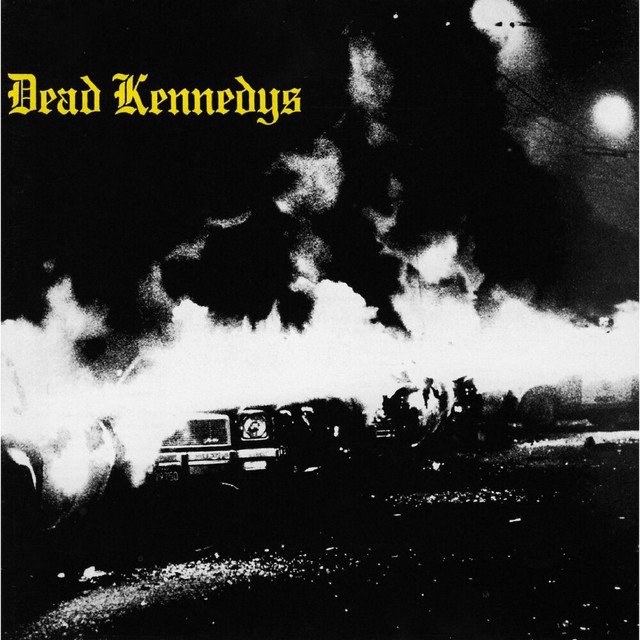
By the time I was 16, I was regularly going to local shows at coffee shops, reception halls, union halls, wherever the DIY scene was able to book. All of the metal and classic rock started to sound stale when we first inadvertently found a local venue that had live music. We were there to drink coffee and smoke cigarettes without our parents knowing, but that became secondary to the shows. This is where I started to form lifelong friendships with kids outside of my own school district and fostered my love for punk, hardcore, and emo.
Punk took over my tastes at this time. Korn and the like sounded so overproduced, schlocky even, with their vapid topics and mainstream appeal. Punk felt like the real outsiders, kids with radical messaging and an immediacy to their emotions and music. It also had an interesting history and allure. I dyed my hair green and started wearing a beat up pair of Chucks, and I began to learn about leftist politics.
Bay Area hardcore punks Dead Kennedys became a powerful guide in shaping my political views, I once read a critic describe Fresh Fruit For Rotting Vegetables as an anarchist newspaper put to music. Coming from having discovered one of the most offensive bands of all time, Anal Cunt, the songs “Kill The Poor,” Let’s Lynch The Landlord,” and “I Kill Children” appealed to the edgelord lingering in every teenage boy who was discovering the world they were told existed was full of lies.
Behind these songs, however, was an unmatched sarcasm and satire. The speedy rockabilly-meets-surf rock hardcore and Jello Biafra‘s lyrics, sung clearly and directly at every conceivable authority made for a much deeper message than just being offensive for the fuck of it. These songs were indeed meant to shock, but the tactics were to shock people into a new way of thinking about and questioning the hyper-normalized institutions and systems around us and speak to the damage they do. “Kill The Poor” is such a frighteningly accurate portrayal of wealth inequality that it still holds water. “California Uber Alles” hasn’t aged as well, but the message behind it against a Democratic candidate whose hidden fascist leanings is a lesson we still need.
Anti-war songs like “When You Get Drafted” and “Chemical Warfare” felt especially prescient during the War On Terror initiative. Thanks to our home printer, for every anti-war poster I hung up at school and got torn down, I had another ready to go. I wouldn’t have been so bold if political punk like Dead Kennedys weren’t inspiring me with their informed rage. This wasn’t mindless angst. This was righteous. Art being used like a weapon, sonically and lyrically. It was also one of the first hardcore albums, inspiring a whole genre, like Black Sabbath. Non-conformity was now a part of my life. Punk was now a part of my identity.
Tom Waits – Small Change (1976)
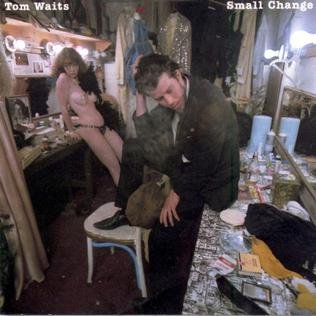
Originally, I had Bob Dylan‘s Highway 61 Revisited in this spot. While that album is a classic, it didn’t really stick with me as long as Tom Waits did. I grew up with country music. I had heard singer/songwriter music before. Dylan’s dense metaphorical lyrics and distinctive voice prepared me for lots of indie and folk artists that I have enjoyed, but it still felt too comfortable. It did not prepare me for Tom Waits, though. Death metal may have been a better preparation, at least in wrapping my head around Waits’s voice.
“Tom Traubert’s Blues (Four Sheets To The Wind In Copenhagen)” begins Small Change with the most delicate and lovely piano and string quartet playing a melody that tears at your heartstrings, the kind of melody that you would expect Ella Fitzgerald or Edith Piaf to sing a song about love lost over. Instead, a voice that sounds like a train car full of coal derailing and burning while a solitary hobo tries to extinguish the flames with Wild Turkey croons, ‘Wasted and wounded/it ain’t what the moon did/and God, what I’ve paid for now,’ collides with the beautiful music, forcing attention to the wearied melancholy that oozes through. The refrain of ‘Waltzing Matilda’ holds a double meaning where Matilda represents both alcohol and every woman who ever broke hearts on skid row. This is one of my favorite songs, ever.
“Step Right Up” flips the vibe, offering a jazz combo playing a bouncy vamp while Waits delivers the best snake oil sales pitch you’ve ever heard lampooning the advertising industry with free form poetry that borders on scatting. It is like a long skit on a hip hop album that breaks up the mood, but you don’t want to skip it. It is part of the mood. It is the mood. It will take the vibes you thought you had to a whole other level. Especially as the next song actually has Tom Waits scatting over a solo piano.
These kinds of tracks have followed Waits his whole career, growing wilder and bolder, deftly balancing lovely instrumentation, experimental turns, deeply moving, poetic lyrics and absurdist excursions. He was a friend of Jack Kerouac and Neil Cassady. Like the beat writers, his perspective has always been from that of the free-spirited downtrodden, and each note and lyric he has put to record has carried a sense of everyman pragmatism mixed with college-level observation. I can recommend any record in his discography, but Small Change is the one I have returned to the most.
The odes to heavy drinking and nightlife that define his early career mirror Bukowski, finding love and joy amongst the sins of a society ambivalent to drunkards with dreams. “The Piano Has Been Drinking” twists sloppy drunkenness into art with its off key and off beat melody and lyrics like, ‘the box office has been drooling/and the bar stools are on fire/and the newspapers were fooling/and the ashtrays have retired.’
If I had known how many friends and loved ones alcohol would take in my life, or otherwise impact in a negative way, or how my own drunkenness would be a steady waltzing partner until one too many dead soldiers littered my surroundings, I may have paid more attention when I heard this as a teenager. As it played out, the romance of drunken poetics and their harsh realities always had a soundtrack. Tom Waits lead me to appreciate Bruce Springsteen like I hadn’t before, introduced me to Warren Zevon, Townes Van Zandt, Randy Newman, and others who showed me the tragic beauty that life on the fringes can offer. Bob Dylan doesn’t come close for me.
At The Drive-In – Relationship Of Command (2000)

Around the age of 15, I saw a video on MTV2 for “One Armed Scissor” by At The Drive-In. This song blew my mind. I had never heard anything like it, sick low bass, twin guitars splicing emo and hardcore riffs, bonkers AF lyrics that still seem mostly like nonsense, and an energy that could fuck up a tornado. This was the biggest high I had from music since the first time I heard Black Sabbath.
“One Armed Scissor” was the lead single off of At The Drive-In‘s third full-length Relationship Of Command. Pre-streaming, I don’t think I ever hunted down an album so quickly. The majority of the album carries the same energy of “One Armed Scissor.” “Acarsenal” smashes your fucking face in with one of the most instantly satisfying build ups into an aggression that felt like watching the DIY live shows at the coffee shops. There was polish here, but I had never heard anything so raw, before. This shit was not only antithetical to Gwen Stefani and N*Sync, but also what mainstream metal and rock had become: Creed‘s windswept hair grunge, nu-metal’s massive budget, Metallica‘s giant Spam can snare drums, and pop punk’s cornball attitude.
Nothing sounded like this, and nothing looked like this, kids seemingly out of nowhere with thrift store clothes that fit too tight and giant fucking afros. They looked like the scene kids I knew who didn’t own a white belt, and balanced rage and melody and drums that would make an angry babushka do a windmill kick. They did a live version of “One Armed Scissor” on Conan O’Brien, and it remains one of the most chaotic talk show performances I have ever seen.
This was hardcore that was melodic, but intense. “Sleepwalk Capsules” is catchy and punchy at once. “Invalid Litter Dept.” slows things down, but is written about a series of women raped and murdered in Juarez. This is discussed in the video, and the fact that there were deeper meanings to the abstract lyrics was also mind-opening. They weren’t just sonically and aesthetically outsiders, but they were also delivering potent messages and raising awareness of abuses of power.
This album still makes me want to flip a table and kick an amplifier, and despite being one of my favorite bands and albums of all time, I missed them twice. I was going to see them in Chicago shortly after they gained popularity. I couldn’t go, and like a month later they disbanded for 16 years. When they regrouped, without the original line-up, I had tickets to see them again in Chicago, only to have them cancel that show to play Riot Fest. The bitterness and added difficulty in seeing them made me miss them again. Regardless, this album got me into post-hardcore, screamo, and made me a lifelong fan of The Mars Volta (who I have seen twice), and I love Sparta‘s first album. I will always fuck with more music like this.
The Velvet Underground & Nico – s/t (1967)
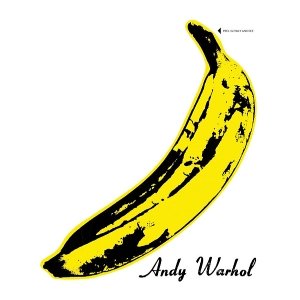
Tying my love of punk and music history together with more songs about the fringes of society, The Velvet Underground & Nico was inevitably going to enter my collection. It goes without saying that I recommend all of these albums, but there is something essential and pivotal to any music fan’s journey in this album. If you like pop music, punk, alternative, goth, heavy metal, folk, psychedelia, or even noise music, The Velvet Underground helped shape that genre in some way.
The opening piano twinkles of “Sunday Morning” introduce what sounds like the kind of pop rock classicism that The Beatles were known for with Buddy Holly‘s “Everyday” as inspiration. It conjures a sunny, dreamy atmosphere with reverbed vocals and an easy-going demeanor. “Waiting For My Man,” a song about buying drugs predicts New York Dolls and The Strokes in equal measure. This is the quintessential NYC garage rock sound that gave rise to punk as much as it did the 2000’s garage rock revival and countless indie rock bands that wanted to fuse catchy vocals with driving rhythms and distorted guitars.
Nico-lead “Femme Fatale” returns to hazy vibes in a way that shoegaze and Britpop would later mimic, her soft but assured delivery over more repetitive and evolving rhythms and guitar strums could have been an influence on krautrock. “Venus In Furs” gives us lilting violins over a bass drum and tambourine beat and proto-goth guitars while Lou Reed delivers an S&M ballad that still feels transgressive. The lo-fi weirdness of “All Tomorrow’s Parties” inspired the name for a music festival and a William Gibson novel, numerous covers, and was reportedly Andy Warhol‘s favorite Velvet Underground song.
The song that stands out the most to me is “Heroin.” An early exercise in post-rock’s crescendo building, this song’s slow builds as the narrator describes heroin use terrified me as much as “Black Sabbath” did the first time I heard it. Unlike that song, however, “Heroin” has a realness to it that lingers long after the song finishes. There are no grooves to jam our way out with, only shifting violin timbres, plodding bass drum, jangly guitars, and Lou Reed‘s ode to hard-drug escapism that build into a cacophony that is uniquely unhinged.
Reed had a long running solo career after this, continuing to push rock music as far as it could go. John Cale went further into modern composition and experimental music, building his own unique legacy, and Nico went on to release her classic, Chelsea Girl, as well as the often overlooked albums that followed which dove further into experimental sounds. The Marble Index is often cited as a major influence on England’s goth rock scene in the 1980’s.
There is a lot to digest in these minimalist arrangements, but forget The Beatles, this album is perhaps the single greatest influence on music in the last 60 years, and I have always kept a physical copy nearby.
The Cure– Disintegration (1989)
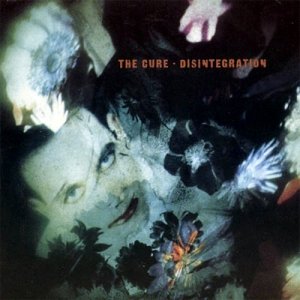
I have written about my thoughts on goth culture before and have a long love affair with almost anything that falls under that genre umbrella, musically. It truly started when I heard Unknown Pleasures by Joy Division whose gloomy post-punk is a meme at this point. I devoured New Order‘s music almost immediately after I heard Joy Division. Bauhaus followed, but it was The Cure that introduced me to and prepared me for shoegaze, as well.
Disintegration was an album I had to hear after watching an early South Park episode where a giant Robert Smith defeats the Colorado kaiju Mecha-Streisand by transforming into Mothra (Gothra?). At the end of the episode Kyle shouts, ‘Disintegration is the best album ever!‘ and Jesus calls him ‘Our savior!‘ How could I not listen?
I revisit this album far, far more than I do Joy Division, New Order, or The Smiths, who were all essential parts of my sadboi music obsession and considerations for this list. but Disintegration is still one of the most lush and perfect albums I have ever heard. The opening melody on “Plainsong” hits like an orchestra, the quintessential FM synth sounds of the ’80s singing and ringing amongst twinkling bells, gated reverb drums with delay effects, Robert Smith’s echoing voice and hypnotic guitar lead all suck you into a comfortable hypnotic state. It is one of the most comforting sounds I have ever heard.
The bouncier “Pictures Of You” takes its time to resolve the melody, letting it build over dual guitars and snappy bass. When it does and Smith’s aching voice comes in, dripping with longing the song becomes a pop masterpiece. All of the elements are mixed with astonishing clarity, but running altogether carry on that enveloping feeling, absorbing your senses. If you listen to this song and don’t feel moved or get chills, you probably don’t have a soul and should take serious stock of your emotional health.
Every element of this album is held together by a gossamer web across each track. The way every instrument merges into the other and the cohesiveness of it, letting gentle chords swells crescendo driven by counter melodies of guitar and vocals undoubtedly prepared me for my bloody valentine, Cocteau Twins, loveliescrushing, and the excellent crop of newer bands carrying on the loud but soft tradition. Songs like “Lovesong” and “Last Dance” carry a new wave flavor that legitimizes every weird haircut and cheesy synth lead the 1980s could ever produce.
Smith’s love and heartbreak are sung so earnestly that it makes Morrissey‘s bookish and cynical croons feel like the ‘pick me’ energy he has always carried. Conversely, watching interviews of Smith often reveals someone genuinely reluctant to be in the spotlight. The hushed vocals on “Lullaby” and the way he swallows his words on the title track seem to affirm this. Meanwhile the bass heaviness on “Fascination Street” and “The Same Deep Water As You” recall Peter Hook and elevate Smith’s vocal delivery.
The sum of all of these parts is a timeless classic that is not only a high water mark in the world of goth, but in popular music at large. Kyle was right.
The Roots – Phrenology (2002)
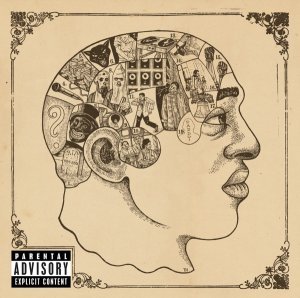
Hip hop is another genre that I could devote a 20 album list to. It would take a lot of words to describe my love for hip hop and how much it has meant to me. It wasn’t always this way. Besides a few CDs and nü-metal, I didn’t expose myself to much hip hop when I was younger. It took until after high school for hip hop to click. I hadn’t heard really anything that could be considered underground, and the mainstream stuff in the late ’90s and early 2000s didn’t really connect with me. I was penniless and maidenless and lived in a small town trailer park. I really couldn’t connect with Ma$e or Ludacris. I liked OutKast and Busta Rhymes, but more for the videos than the music itself.
Then I got a sampler CD from Paste Magazine with a track by Blackalicious on it. The Gift Of Gab‘s wordplay intrigued me. I bought their CD, The Craft and found something magical in those words and rhythms. I didn’t know where to go next to hear more hip hop. So, I went to the local used CD store. Thumbing through the CDs, I found Phrenology by The Roots. I remembered reading about it in the music press a few years ago, and always liked “The Seed (2.0),” so I picked that.
The intro, a turntable scratch followed by strings and a voice saying, ‘In the beginning, there was me. I was rhythm, life, two turntables and one mic,’ followed by the bumping, loud rhythm of “Rock You” popped harder than anything I had heard before. This little moment connected what hip hop was all about. Black Thought‘s flow is commanding, forcing every word and bar into your brain with each bass hit and snare snap. His lyrics are intelligent and thoughtful to the point that it takes a few listens to unpack each reference. A full hardcore punk track followed, throwing me for a loop. It then transitioned into the slow funk of “Sacrifice.” Again, Thought’s lyrics draw you in, but now less aggressive and delivering a more positive message.
None of this was like the videos on Total Request Live or the rap that the jocks and preps were listening to at parties. These three tracks are still one of the wildest rides on any hip hop album that I have heard. “Rolling With Heat” introduced me to Talib Kweli, which later lead me to Yasiin Bey (née Mos Def), Common, Ye, and the Soulquarian crew. “Thought @ Work” features a massive list of hip hop greats like some sort of syllabus before Thought launches into a torrent of bars that remain a peak example of his microphone mastery. The instruments drop out when he says, ‘fuck gettin’ money for real, get freedom,’ and the punk in me starts a circle pit.
Like Blackalicious, this was antithetical to the image of hip hop I had been sold. “Water” is like 10-minutes long and has an extended section of experimental electronics, again completely altering my perception of what hip hop and even music could be. Who had the audacity to mangle genre conventions so much while still executing the traditional genre parts so well? Funk, soul, R&B, and techno all make appearances on Phrenology, as well.
Later, in college, I would study the poet Amiri Baraka who is featured on the track “Something In The Way Of Things (In Town).” By then, I had become a devotee of hip hop, diving into the world of underground hip hop, learning how to recognize talent over commercial ambition, and digging into classic albums. This seemed to further legitimize hip hop as an art form that has been too often swept aside or written off by so many of my peers and elders who I talked about music with, making my journey into hip hop largely a solitary one for years.
I truly believe there is a parallel that runs between hip hop and punk. They both started from poor kids in the city and speak truth to power while the most vapid and watered down manifestations of the genres wind up in the limelight. Punk barely does what hip hop can do, however, and these days when I want music that scratches that revolutionary itch, hip hop is where my attention goes first. Few albums are as ambitious and wild as Phrenology, though. The Roots lived up to their name, helping me absorb a whole-ass genre of music that has been a life long love affair.
Miles Davis – Kind Of Blue (1959)
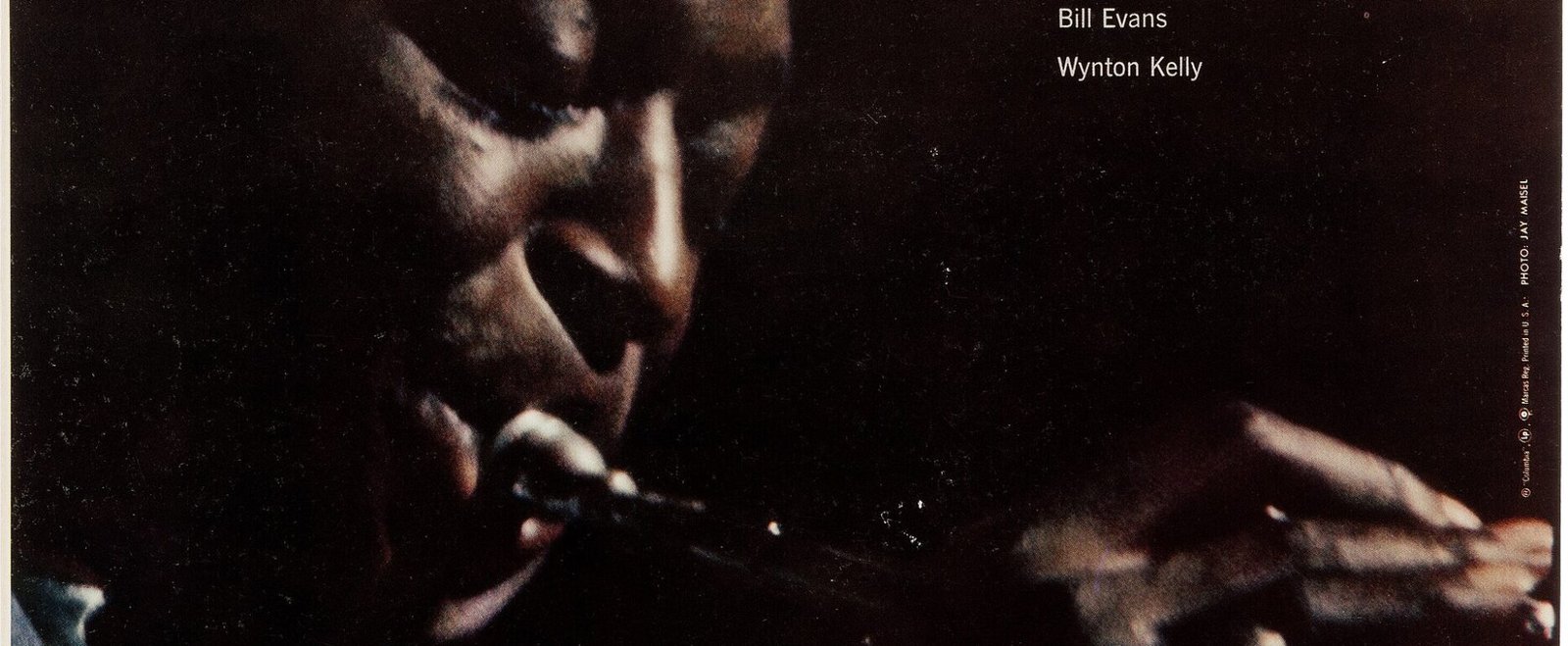
I’ve been writing at Everything Is Noise for only about a year and a half. In this time, I have been able to interview bands that I admire, review albums that were transcending, and reflect on great albums from the past. I have also sharpened my writing skills and been fortunate enough to get to know a group of funny, intelligent, opinionated, and sassy music nerds. I am thankful for it all, but perhaps one of the most daunting and exciting privileges I have had in my time here was writing about Kind Of Blue by Miles Davis.
I don’t think I am going to out-do that article here. So, I encourage you to read it yourself for my full thoughts on its significance to me, but I will say that it is one of my all time favorite albums that since hearing it has never once left my top ten of all time list, a list that lives in my head and rotates frequently. Kind Of Blue sent me on a spiral that has never ended: it got me into jazz. There were times where I have been so interested in jazz that it threatened to dominate my listening habits. There is so much jazz to talk about that there are entire fields of study as well as appreciation societies dedicated to it. I cannot even scratch the surface, but I can recommend this album as a starting point.
Mastodon – Blood Mountain (2006)

When I get into a thing, I fixate on it for a while. So, I had spent a few years discovering 30+ years of punk music and figuring out what kinds of jazz, hip hop, and classic rock I enjoyed while also absorbing the rise of indie rock, garage rock, and emo. I had damn near forgot about heavy metal. Besides Tool and some hardcore, there wasn’t much heavy music in my life during this time.
I had an old Relapse sampler CD, though. I may have listened to it once, but one day I saw it and gave it another listen. It had “Crusher Destroyer” by Mastodon on it. This song made any of the death metal or black metal I had heard at that point seem silly. It felt so fucking heavy. I looked up Mastodon and saw that Blood Mountain had just come out, grabbed a copy, and immediately felt what I was missing, like finding a forgotten keepsake in the junk drawer.
Blood Mountain is more textured and progressive than “Crusher Destroyer” and the extended acoustic passages on “Sleeping Giant” and “Pendulous Skin” appealed to me after the intensity of “The Wolf Is Loose” and “Crystal Skull.” This seemed more accessible, but still satisfied that part of me that was missing heavy metal. Especially when songs like “Circle of Cysquatch” go so fucking hard.
Metal eventually consumed me. Blood Mountain kicked off the deepest genre discovery I have ever gone through. I found all of the burned CDs people had given me over the years to encourage me to check out more extreme forms of metal. I found the metal writers online that I liked, listened to their selections, found my favorite labels, moved away from my thrift store college kid look back to metal t-shirts, and went almost exclusively to metal shows.
There was probably a two year period where I listened virtually nothing else. This was probably an overcorrection, and I have been learning to balance my music diet for a few years now. I have successfully shed metal weight and now maintain a healthy balance of lots of music for my health. I don’t even own camouflage cargo shorts anymore! Still, listening to this album again, reminds me why that obsession happened. Leviathan may be Mastodon‘s best record, but Blood Mountain kicked my ass so much that I have never fully recovered.
Sunn O))) – Monoliths & Dimensions (2009)
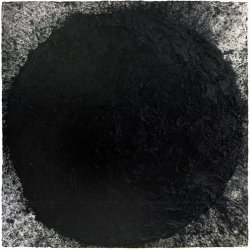
The beginning of my second era of being a metalhead may have started with Mastodon, but their sludge influence lead me to doom metal. For a few years, doom was my favorite genre. I had heard death metal and black metal before, lots of hardcore and grindcore, but doom was a newer genre for me to explore that harkened back to my beloved Black Sabbath. The other metal subgenres didn’t really show me anything new, but if you dig deep enough into doom, you find drone metal, the metal world’s answer to ambient music.
Sunn O))), pronounced ‘sun’ and named after the amplifier brand, are the reigning kings of drone metal. Earth, the band that started the genre, also inspired their name, being rotationally connected but producing a more massive sound than Earth does. The idea behind this music is closer to modern composition classical music, or if Brian Eno was more interested in forcing meditative calmness through sheer volume instead of gentle tones. Chords are drawn out to their fullest sustainable length, soaking in distortion and amplifier feedback. Iy is despondently slow, but with that slowness comes the magical textures that happen to sound when pushed to excess.
The 17+ minutes of “Aghartha” painstakingly crescendo over Atilla Cishar‘s grim spoken word, letting increasingly haunting strings build along with odd percussion in a way that could soundtrack a candlelit descent into ancient catacombs. It was haunting and bizarre upon first hearing it. I was not prepared to like something so weird at the time, but I could not stop listening. “Big Church (megszentségteleníthetetlenségeskedéseitekért)” throws enigmatic chanting, an angelic church chorus and church bells into the mix, making it not only the most frustrating song title I have ever had to type, but also uniquely frightening and calming at the same time.
“Hunting & Gathering (Cyclona)” gets even weirder with a brass section that feels almost triumphant, like Conan The Barbarian looking out over a vanquished battlefield, and album closer “Alice” builds a cinematic soundscape that is at times like Ennio Morricone and others like a weird fantasy. “Alice” is the elevation of drone metal to high art.
Sunn O))) remains one of my favorite bands, even if their releases are infrequent these days. They also have to be the metal world’s equivalent to The Grateful Dead, in that there seems to be an endless number of live recordings, demos, and bootlegs available to explore along with lots of cool merch. A slow goal of mine is to own at least all of Sunn O)))‘s studio albums on vinyl, but that takes time, money, and hunting. At any rate, Monoliths & Dimensions is a high watermark in the drone metal cannon, and opened me up to exploring more slow, heavy, and experimental music.
Fela Kuti – Zombie (1976)
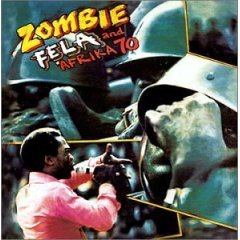
Let me start this off by saying that I hate the term ‘world music.’ I am thankful that journalists are starting to get away from that, but you will still see the term used to categorize music in record stores and online. It is a Western-centric and jingoistic term that broadly generalizes and in doing so minimizes myriad cultures and traditions to exotic novelty. However, it is where you would find Fela Kuti in many places.
Fela Kuti was a Nigerian activist and musician who pioneered afrobeat music. His rise in popularity would catch the attention of Brian Eno who would encourage Talking Heads to take inspiration from this fusion of traditional West African music with funk and jazz. The songs tend to be longer and experimental in their approach, using repetitive rhythms an lyrics to create something highly danceable and fun. With his band, Africa 70, Kuti would deliver criticisms against the military and war, colonialism, capitalism, and racism.
On Zombie, he compares soldiers to mindless reanimated corpses, only obeying orders and seeking destruction. Yet, unlike The Cranberries, or many punk bands, Kuti made these heavy topics something you could party your ass off to, and it was in my party days that I was introduced to him.
My friend group in my 20s, fueled by shots, beers, and nose beers would throw the title track from this album on and turn whatever apartment kitchen or tavern unfortunate enough to have a jukebox into a 12 minute dance party. The feeling was infectious, the way hip hop makes you nod your head to the beat, afrobeat made your entire body move to funky drums and driving hand drums, groovy guitar licks, and the funk/soul horns that seemed to define 1970s cool. Tony Allen, a legend in his own right, served as Fela’s drummer and band leader. Allen would go on to be a major artist in the jazz world and collaborate with many great artists.
Fela’s message of decolonization worked. Hearing this music opened me up to experiencing the musical and cultural wonders that the Global South and traditional, regional folk music the world had to offer. These kinds of music offer a literal world to explore, and many adventures into the many fusions of traditional and contemporary music is often a joy. Caetano Veloso, Os Mutantes, William Onyeabor, Dengue Fever, Natalia Lafourcade, and so many more unique styles and sounds are so often forgone in the face of major labels and accessibility, which is an incalculable shame.
So, do yourself a favor and dive into Fela, any of the other artists I mentioned, or explore the incredible Radiooooo.com or NTS Radio. I am not paid by either of these sites, nor do I think they know I exist. But I want to give a quick shoutout to these resources. Radiooooo is a website and mobile app that lets you pick a country and a decade and it will play music curated by global DJs on that setting. You can also shuffle across the globe according to your selected decade. It is very cool. NTS, on the other hand, is a web based radio that has a massive selection of DJs and radio shows that feature contemporary music as well as deep dives into artists, genres, and different scenes around the world. If following music journalism and new releases isn’t enough, these are great resources to expand your musical palette.
The Beach Boys – Pet Sounds (1966)

If it isn’t already apparent, I don’t fuck with a lot of upbeat or happy music. There are probably psychological reasons for that, but mostly I just don’t find happiness to be that compelling. It seems like most major chord, upbeat songs are prevalent in the world of pop, which is often trying to appeal to the most people possible with industry tested chords, trending elements, and two dimensional lyrics. In short, I think of most, not all, pop music as lowest common denominator music.
In high school, I was very into The Beatles. I had always been told how they were the best, so what else in the classic pop cannon would even compare? Why would it matter, and why should I expose myself to more of it? The Beach Boys always sounded so disposable for me, besides a skit from The Muppet Show with “I Get Around” sung by pigs on motorcycles.
The answer came later in life. I had learned to enjoy some of the indie pop at the time. The Shins and Animal Collective were among my favorites. Animal Collective released Merriweather Post Pavilion, and I became quickly obsessed with that album, listening to it on repeat. One night, at the bar with some of my aforementioned 20-somehting homies, a friend played “Waiting For The Day” by The Beach Boys. I was mid-conversation, but the music caught my ear. In particular the part at the end where the bass drum flares up and the vocals become a call and response. This sounded like frequent tricks Animal Collective were doing and echoed echoed The Shins‘ melodies. I asked what my friend Chris had played, and he said, ‘what? you’ve never heard Pet Sounds?‘ with an astonished and somewhat pitied look. I told him no, and he got real excited and said, ‘dude! I am going to burn you a copy of that CD and carry it with me until I see you again.‘
Chris did just that. A little over a week later, I ran into him. He immediately produced an uncased CDr of Pet Sounds and said, ‘I’ve been carrying this around in this jacket, I’m sorry if it is scratched.‘ I knew it would take a lot of passion about something to do that for someone, and that Pet Sounds must have been super important to Chris. So, I eagerly took it home and put it on my iPod, which was the style of the time. It wasn’t scratched.
What filled my ears was the most magical pop album of all time. This isn’t hyperbole. This thing sounds immaculate, baroque, an exercise in pop excess that remains unmatched in creativity, harmony, and lyrics, fueled by an insane backstory. I will try to be brief, but Brian, Carl, and Dennis Wilson under guidance and encouragement from an overbearing father (who became their manager) formed a band with their cousin, Mike Love, and friend, Al Jardine. They blew up in popularity and gained a friendly chart rivalry with The Beatles. Hearing Rubber Soul, Brian Wilson, the primary composer, wanted to top it. He worked with a jingle writer, took inspiration from prominent producers and writers at the time, hired a massive orchestra, and recorded Pet Sounds sharply contrasting their standard surf rock pop with lush instrumentation, more percussive elements, and infectious, intricate vocal harmonies. Wilson introduced polytonalities, abstract instrumentation, key ambiguity, wall of sound production, and the concept album to mainstream rock and pop audiences.
Meanwhile, his sanity was waning. He would go on to attempt his magnum opus, Smile, only to be met with resistance from the rest of the band and record a reduced version, eventually reducing his role in the band, filling his living room with sand, eating nothing but steak, and generally having a very bad time that took him many years to recover from. More crazy shit happens to the band later on with guest stars John Stamos and Charles Manson.
Included on my copy of Pet Sounds was the single “Good Vibrations”, which was recorded afterwards, using tape splicing techniques and a recording process that took 4 months to complete. It was the most expensive single ever recorded at its time. Our hero, Brian, was unwell, and reading about his life in Catch A Wave: The Rise, Fall And Redemption Of The Beach Boys’ Brian Wilson by Peter Ames Carlin revealed a tragic and wild story about Brian and the band.
So, listening to Pet Sounds in that context is all the more amazing. This record is so good, I read a book and watched documentaries about it. “God Only Knows” is one of my favorite songs of all time, Songs like “I’m Waiting For The Day,” “You Still Believe In Me,” and the overplayed, “Wouldn’t It Be Nice” all connect to different memories and relationships. “I Know There’s An Answer” and “Hang On To Your Ego” are intriguing regarding not only Brian Wilson‘s overburdened mind, but also my own fear of losing my mind. “Sloop John B,” the only unoriginal song on Pet Sounds, serves as a fun and elegant interlude amongst an emotional album, and was also a frequent karaoke choice for me, and became an anthem during an unpleasant hallucinogen experience.
Pet Sounds shaped my listening and relationship with music, invigorating my interest in the history of music, but also the possibilities in what recording an album could mean, how intricate a beautiful even the most vapid seeming of artists could be, and breaking down a barrier of needless bias. Every listen to this album offers the opportunity to find some new detail. It also lead me to hearing Van Dyke Parks, Harry Nilsson, and Charles Manson‘s music (though I don’t really recommend the latter). This is probably my gold standard album; everything else is a fraction of Pet Sounds.
The Band – The Last Waltz (1978)

The last story about my friend group in my 20s is about The Band. The Band were a backing band for Ronnie Hawkins and Bob Dylan. This group of studio and touring musicians from Canada and Levon Helm from Arkansas navigated a wide world of folk and rock and roll before they set out on their own. Not knowing what to call themselves, they settled on what they had always been called, The Band.
A roommate of mine had a few traditions that he brought to the apartment, but one was watching The Last Waltz, Martin Scorcese‘s documentary and concert film that serves as a love letter to The Band as they play their final concert at Winterland Ballroom in San Francisco, 1976 on Thanksgiving. This tradition of course involved drugs and booze, but it was something spiritual at the time. A small party, roughly half of the maybe eight people there were intimately familiar with the movie. The rest of us watched in awe.
The Last Waltz is an incredible send-off, featuring an absolutely ridiculous line-up of guests, including Hawkins, Dylan, Neil Young, Neil Diamond, Van Morrison, Emmylou Harris, Muddy Waters, Eric Clapton, and The Staples Singers among others. These artists’ participation gave gravitas to the show unlike anything I had seen before. Yet, the music, at times very familiar, was so far removed from what I had been listening to that it caught me in a weird liminal space between nostalgic comfort and newfound appreciation.
Growing up with ’80s rock and ’90s country before venturing out on my own music tastes kind of prepared me for this epic block of roots rock, but only so much. Again, I saw that the popularization of these sounds diminished their original impact and energy as they were replicated through increasingly pedantic facsimiles. I had forgotten that there was once purity there, that sincerity could exist behind the entry points of “Hotel California” and Toby Keith.
The vibe on The Last Waltz is one big party, just like we were having, but with musicians that were so talented that mountains of cocaine and lakes of whiskey couldn’t impede their precision. In the original VHS cut, Neil Young plays “Hopeless” flawlessly with a big ol’ coke booger drooping out his schnoz. Nobody seems to be having a bad time, and every guest’s performance is enhanced by the professionalism of The Band.
Normally, I shy away from compilation and live albums, and while The Band‘s studio albums are absolutely noteworthy, this live performance is something for the ages. The album version is four discs worth of career-spanning songs and star-studded collaborations that trigger every middle-aged dad instinct nascent in my contrarian persona. For all of the heavy and experimental music I consume, sometimes I just want some grass stained sneakers, a cheap beer, and a few buddies to talk about Lonesome Dove with while I flip burgers on a grill. The variety of classic rock sounds here could temporarily, at least, pacify any suburban boomer, gen Xer, or millennial that grew up in the suburbs or country.
“Such A Night” by Dr. John lives in my brain. “Coyote” by Joni Mitchell has grown on me more than any other song on this album over the years. “Mannish Boy” by Muddy Waters satisfies blues cravings, and Van Morrison‘s performance of “Caravan” is something for the ages. Yet, The Band are the stars. “The Weight” (especially the version with The Staples Singers) is one of my favorite songs. “The Shape I’m In” became an anthem between me and a friend. “The Night They Drove Old Dixie Down” is the only song about the confederacy I will ever sing the praises of; not that it is explicitly racist, but it is told from the perspective of a working class Southerner during the civil war.
The Last Waltz reminded me that country music isn’t all terrible, that quality songwriting can cover many themes and nuances and can cross genres, that traditional ideas that I often want to reject in music can have incredible talent and artistry behind them. It is a reminder that good music isn’t restrained to the avantgarde or specific eras, but transcends time and genre into a recognition of some of the best to ever do it.
Juliana Barwick – The Magic Place (2011)

“Atmosphere” is a term I use a lot when describing music, loose as the exact definition may be; I live for albums that have a cohesive feel to them, whether angst and anxiousness or summery glee. More often than not, the atmosphere of an album is held together by some combination of effects, amplifier hums, synthesizer pads, rhythmic or melodic motifs, or lyrics that exist in kind of an emotional grey area, the liminal spaces between big feelings and big ideas. Perhaps I like this because it feels like a more accurate representation of the day-to-day drudgery of life. Wake. Work. Eat. Sleep. Repeat. Regardless, an album’s atmosphere can make or break it for me.
I didn’t always appreciate this nebulous, hard to define feeling, but when music’s calming and healing effects began to reveal themselves as I transitioned from an angry young man into an angry adult, I found comfort in ambient music. I had heard Aphex Twin‘s ambient works, Stars Of The Lid, and Brian Eno, but it was Juliana Barwick‘s The Magic Place that truly opened my eyes to what can be done with ambient textures.
The Magic Place is composed almost entirely of Barwick’s wordless vocals, looping and layering themselves into a new age madrigal. Sparse instrumentation makes its way into the mix, like the piano on the beautiful “Cloak” or the rollicking guitars and drums on “Prizewinning,” but Barwick’s voice is the main feature. Perhaps my love for The Beach Boys vocal melodies made this an easy sell, but I had never really heard anything like it before. The Magic Place is a work of substantial beauty.
It should also be noted, that while this is a very ambient-adjacent album, it also fits into a kind of experimental category, merging traditional choral music with snippets of jazz, classical, and indigenous music. The songs slowly build and unfurl, dropping subtle changes all the way through, a key part of ambient, but the pacing and variety make it a deeply engaging listen. Hearing this album as I was settling into the routine of bills and adulthood provided respite, an ethereal plane of sound and time that never fails to leave my jaw agape, and served as a reminder that ambient, new age, neo-classical, and experimental music had a lot to offer for easing the mind.
Swans – The Seer (2011)
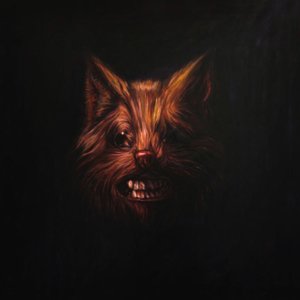
The Cure, Sunn O))), and Juliana Barwick all helped to solidify my love of atmospheric music, whether heartbreaking, morose, or beautifully elegiac. Meanwhile, extreme metal satisfied my cravings for heaviness. While some of those metal albums were certainly atmospheric, no combination of heavy and atmospheric could prepare me for Swans.
The Seer was my introduction to the project. Lead by Michael Gira, Swans helped define the No Wave movement, slowly morphing into industrial, dark folk, goth, and fully experimental music. By the time The Seer came about, the band had gone through many transformations, and have released five albums since, continuously evolving. The Seer, however, feels like the most realized version of Swans, and drew me into a two-month obsession. Seriously, I spent two whole months listening to nothing but Swans. I started to worry about myself, and an album I will talk about later helped break this self-flagellation.
I say this, because if you aren’t familiar with Swans, it is probably because you haven’t specifically sought out the most frightening music you can find, and that is probably a safe mental space to be in. In terms of dark music, the rabbit hole goes deeper than Swans, but I don’t think any noise, No Wave, or otherwise experimental music comes close to what Swans have done, musically.
The Seer is meant to be played fucking loud. The opening repetitive chords and dulcimer of “Lunacy” that is intensified by timpani, Gira’s weathered, deep voice, and the eventual orchestra of strings and drums that creates an unmatched level of tension and anxiety that I have never experienced before or since. It all drops out into a vocal chorus chanting cryptic descriptions of the often repeated ‘lunacy,’ said so much over such intense music that the syllables become more impactful than the word itself. Who the in the ever loving fuck would do such a thing? By the time you are wondering if you have dulled your incisors from gritting your teeth, haunting dark folk takes over to the repetition of, ‘your childhood is over,‘ done with sublime harmonies and gentle acoustic guitar and violin, and this is somehow more emotionally shattering than the anxiety-inducing parts.
That was a doozy of an album, eh?
Captain, that was track 1.
Fuck.
Swans uses repetition like a weapon on The Seer, like a bizzarro world of krautrock where quirky, jammy changes happen incrementally over repetitive rhythms serving a head nodding, joyful trance, but instead are meant to scare the shit out of you. The first 4.5 minutes of the nearly 10 minute track 2, “Mother Of This World,” is a rhythmic breathing over drill sergeant march drums that one time drove a soccer mom at the bar I was working at to leave, complaining about the music. Another time it prompted some elderly, obnoxiously drunk conservatives to sincerely ask if I was doing ok. I learned to take my iPod off of shuffle at work. Anyway, the halfway point of the song where the melody and beat change isn’t any better, as the drums continue to march over an organ lead part that sounds like The Doors read Kafka on acid and grasped the futility of life.
We are now 17 minutes into a nearly 2 hour long album; I am not going to continue mapping every song and movement within. I will say, that this album has been a top 10, desert island album for me from the first time I heard it. There is a lot more fright, anxiety, all-encompassing dread, and hypnotic nightmares to get lost in on The Seer. Over two months, I would listen to this album over and over until curiosity would take over, and I listened to Swans entire discography. The sheer and aggressive nihilism of it all was like a fire-hot romance I didn’t know was coming. Swans consumed me. So much so that I still use caution listening to them.
The thing about No Wave was that it was a reactionary response to the glossy-pop sheen of New Wave. No Wave bands were devout practitioners of an anti-art, a dada-esque musical movement that sought, more than punk, to be as opposed to popularity, consumerism, and accessibility as possible. Since its origins, few, if any, No Wave bands have had a career as long and varied as Swans. To achieve this, Swans seems to have mastered being the adversary to anything that resembles mainstream music or thoughts. As a result, Swans have honed a wholly unique sound that borrows and subverts so many genres of music that it becomes something amazing onto itself while remaining nihilistic, misanthropic, and unabashedly independent.
Swans was also the absolute, most ridiculously loud show I have ever been to. Allegedly, one of the times I saw Korn was, at the time, the loudest show since Pink Floyd‘s infamously loud concerts, but there was no competition. Seeing Swans on tour for The Seer was the first time I went to a concert where earplugs were handed out at the door. I took some, shrugging it off. I’d been to so many loud shows before, this won’t hurt. Pharmakon opened. It was loud and, y’know, a noise show, but the decibel levels were tolerable. We smoked, grabbed a beer, and hit the toilet to get a spot further back for Swans. Within 15 seconds of them starting I could feel the ear damage and scrambled through my pockets like a paranoid stoner trying to find his wallet for the cops: frantic. Even with the foam earplugs, I don’t think my hearing fully recovered from that night.
Swans blew my mind. They opened me up to abandoning my expectations with music. One trick popular and classical music employs is building musical tension and releasing it. This becomes predictable, and when we hear, even new songs, we learn to anticipate the resolution. Swans also does that, but the tension never really goes away. This opened me up to weirder and darker music, but nothing has ever hit as hard as Swans.
Makaya McCraven – Universal Beings (2018)
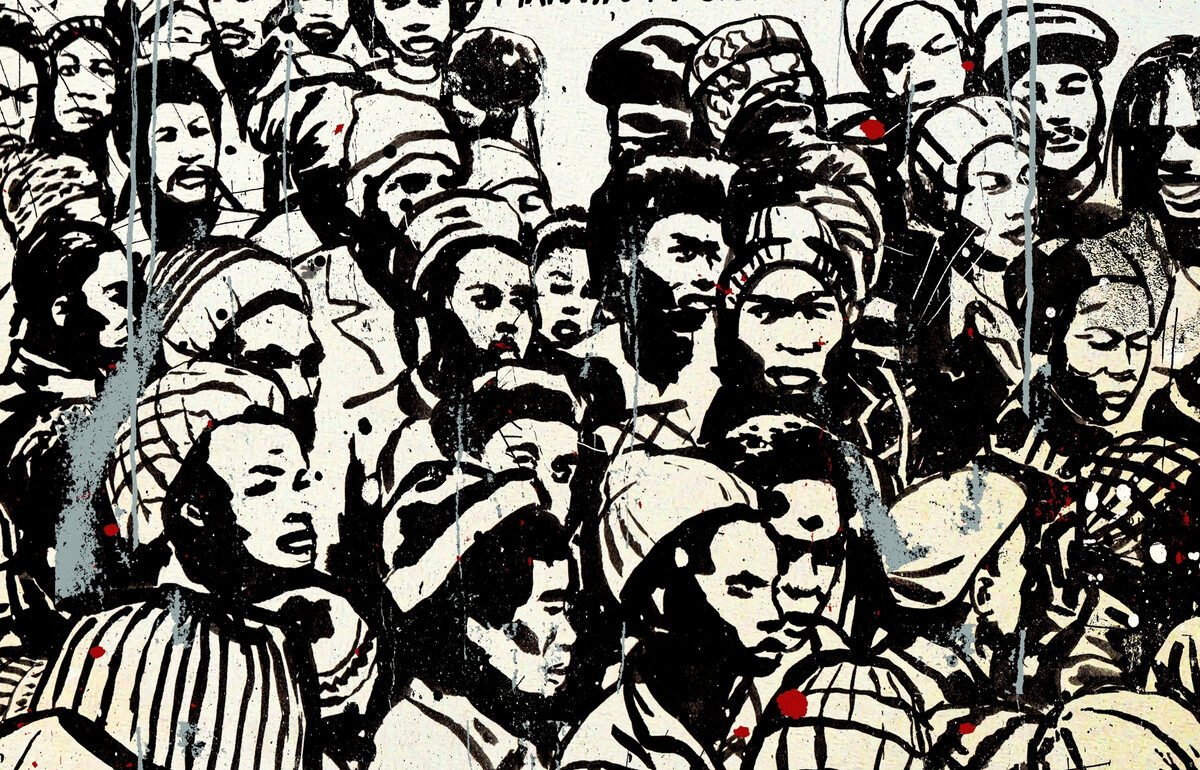
This spot on the list held me up. I am sure there are microgenres that I could get into. I almost listed a few albums; Stevie Wonder, Television, Kendrick Lamar, and Low all competed for this spot, or changing the location of the album and adding in Interpol, Refused, Madvillain, or some other cherished record, but none of those records really exposed me to anything new. I am not sure if this one fully counts either, but I know that it is responsible for a lot of money spent on vinyl, and like Mastodon, was a much needed rejuvenation for my listening habits. This isn’t the album that ended my Swans obsession, either, but it could have, were it released 4 or 5 years earlier.
I bought this record on a whim. I had gone to a local record store with no particular agenda and a pocketful of disposable income, a particularly dangerous act for both my time and budget, but also one of my favorite things to do. Browsing through actual vinyl records with an open mind is such a fulfilling activity. Go to your local record store. Anyway, my friend Dennis was working, and I asked him if he had heard anything cool lately. He immediately recommended Universal Beings, which I purchased without a second thought.
What awaits the listener in Universal Beings is an incredible jazz experiment. Drummer and band leader Makaya McCraven is joined by jazz musicians from New York, Los Angeles, London, and his home Chicago recorded four sessions of wildly intricate and lovely jazz that spans multiple jazz subgenres. Additionally, McCraven is informed by hip hop, and part of his process is resampling recordings from these sessions, creating a collage of improvisation, composition, and sounds that are unlike anything jazz had ever offered me at that point.
Beyond this unique approach, Universal Beings also jump-started my love of new jazz. Prior to this, my jazz preferences were largely in the classics, bop and post-bop primarily with a little free jazz and spiritual jazz thrown in. I was ignorant of the modern jazz scene. The players McCraven enlisted for these sessions have become some of my favorite jazz artists, like Shabaka Hutchings, Nubya Garcia, and Jeff Parker. There are also rewarding and interesting artists like Carlos Niño and Anna Butterss on here, and it introduced me to one of my favorite labels, International Anthem Recordings.
Universal Beings itself is a sound collage, each side of the record pulled from each city’s session. New York gives us smooth and soulful jazz, touched with spiritual elements. The Chicago side is much more frantic and energetic, raising tension through repetition on “Atlantic Black” or the distorted electric guitar on “Wise Men, Wiser Women.” The London side feels even more experimental, merging almost lo-fi hip hop on tracks like “Viola” with the effortlessly cool vibe of post-bop jazz or the chatter recorded over a drum beat that ?uestlove must envy that makes “Royal Outro” feel like a skit on a hip hop album leading into a posse cut. Los Angeles offers us funk and psychedelic soul vibes on “Butterss’s” juxtaposed to the nervous rattle on “Turtle Tricks” to spoken word (“Brighter Day Beginning”) to the sublime closing title track.
Universal Beings by all rights should be a modern jazz classic, pushing the envelope on how jazz is recorded and the possibilities that modern production techniques can bring to jazz. The who’s who of excellent jazz musicians on here makes it a great starting point to get into the modern jazz scene, and is why I will always trust Dennis’s recommendations. Go to your local record store and pick up something you’ve never heard before. It can make a big impact.
Ramleh – Hole In The Heart (1987)
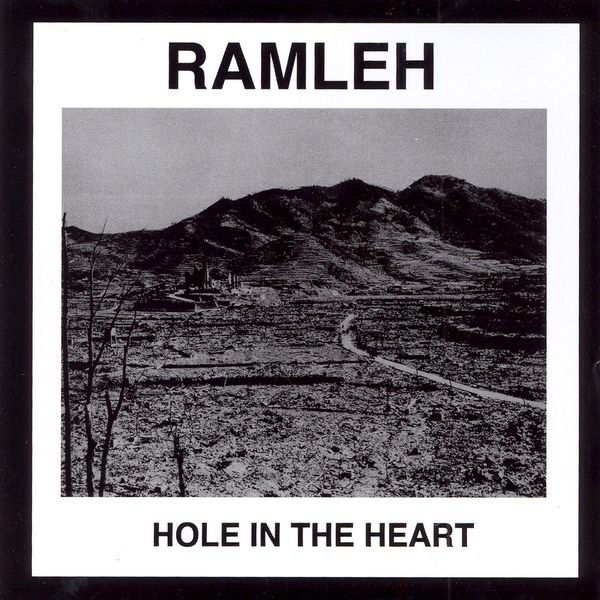
Harsh noise wall or power electronics was probably the hardest style of music for me to get into, characterized by layers of feedback, white or pink noise, and a general vibe that this music is not meant to be enjoyed so much as experienced makes this music unapproachable for most people. This is the point of the music, though. Using feedback loops through mixers, effects pedals, rewired electronics, tape loops, found sounds, samples, and whatever else can be looped into the generation of non-musical sounds, noise artists deconstruct what form and structure mean in music, usually with a sledgehammer, often metaphorically, but sometimes literally.
I don’t remember exactly when I first was exposed to noise, but in theory it isn’t that far of a jump from things like Sunn O))) or Boris or Swans. In practice, though, it was much more abrasive and esoteric than any of those acts. To understand noise, I had to truly remove myself from my comfort zone. I had seen The Body, Pharmakon, and Wolf Eyes, but it wasn’t until some friends and I were offered lodging at a noise musician’s home for a weekend in Detroit that the process and mindset it takes to create, listen to, and appreciate noise started to click. As I watched our host and a friend assemble a table full of various components, it began to dawn on me how deliberate all of this music is. Noise is often improvised, but through a barrage of constant clamor, musicians find and exploit textures and elements in the wall of sound, harnessing their frequencies as a sort of expressionistic sound painting that serves as a moment in time, every twist of a knob a way to get lost in an ocean of soundwaves. I don’t have a recording of that jam session, but inspired by this, I became a casual noise fan. I prefer live performances, but sometime the right recording can satisfy as well. In this case, if I were to recommend a noise album as an introduction to the genre, it would be Hole In The Heart by Ramleh.
Ramleh is one of the older acts in power electronics, but Hole In The Heart is the most celebrated of their long catalogue. This album has loads of grit and dissonance, harsh industrial qualities juxtaposing drone, but it kind of plays like a post-rock record. There is a meditative quality to noise music, and this may be the best expression that I have heard. The songs feel emotional and dramatic, purposeful. Originally a one-off cassette release, streaming versions of the album are now extended to a double album at almost 90 minutes. The long version is the only one I have heard, but it is transfixing and cinematic.
By the end of volume one and the six parts titled “Redcap” you begin to really sense the mournful qualities of the project as they rattle and swell into what can only be described crescendo of discomfort. “Spear Flower” is a droning monstrosity of distortion and rising tension that somehow feels as close to dub as this kind of music is going to get, then ending with abrasive squeals of sound. “Product of Fear” feels calming and ambient comparatively, and wouldn’t feel out of place on a Planning For Burial project. The nearly 25-minute closing track, “Untitled,” is a journey through many sounds and textures that keeps a song that long intriguing the whole way through. If the beauty and possibility of experimental and noise music doesn’t come through on Hole In The Heart for you, the genre is probably not for you.
And that is ok. Noise music humbled me. I am sure I can still be insufferable about music, but before becoming a noise fan, I am sure I was worse. Being a fan of a style of music that most people find utterly repulsive and unlistenable really makes you pause and think, ‘do I really have that much room to talk shit?‘ Like, what, am I going to change the mind of a 311 fan by showing them movie-length albums of an energy whose color is cigarette ash and pain? No, Broc, no. You buy harsh noise tapes, dude, chill the fuck out.
Sam Prekop & John McEntire – Sons Of (2022)
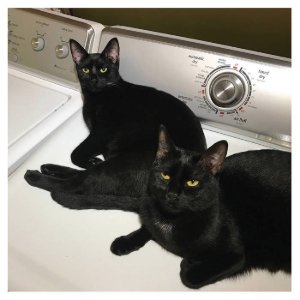
The most recent album to have a dramatic impact on my listening is 2022’s Sons Of… by Sam Prekop & John McEntire. Electronic music has never been a major part of my wheelhouse. It has been there since hearing Aphex Twin, Squarepusher, Moby, etc. Most of the time, electronic music was what I would look for if there wasn’t a good metal or hip hop or jazz or punk album to check out. That was a shame, but then I ran across Sons Of….
I knew of Prekop and McEntire originally from their other projects. Both were in The Sea And Cake, and McEntire was in Tortoise as well. With a long appreciation of those projects, Sons Of… seemed worth a listen. I did not expect to become as enthralled by this album as I was. Using modular synths, trigger pads, samples, and percussion to create these four tracks of warping and ambling music that exists somewhere between house and krautrock opened up a world of questions about electronic music for me.
It would be difficult to fully articulate these songs, suffice to say that there is never a boring moment. This album plays out like a continuous journey of sound discovery. There aren’t hooks, really, no choruses or refrains. The only thing that grounds you into a song is the rhythm, which also subtly shifts. If there was ever an album to get higher than Kissinger’s war crime count to and get lost in, it is this one, and for as great as this album is, my curiosity was greater.
I didn’t know what ‘modular’ synths were when I heard this. So, I looked it up and found myself on a deep dive into synthesizers in general. Modular synths are, well, modules that manipulate sound. A sound wave is produced through electrical currents, and that singular soundwave is manipulated through other circuits on other modules to create different sounds and timbres. Throw in looping, sampling, and effects, and you begin to understand how all sound is just a variation of wave shapes and frequencies. It is kind of mind blowing to think about. Then you think about the sheer variety of sounds on this record over long tracks and the level of detail and intrigue each new measure produces, and you are trapped in a fantasy world where you can afford a room full of synthesizers and infinite free time to play with sound design and music production.
Or, you begin to appreciate electronic music on a level you never have before. See, I was a victim of ‘rockism,’ the notion that the only good music is made with rock instruments and can be replicated live. This is of course, horseshit. Sons Of… squashed that prejudice. This wasn’t the odd exception electronic album that found its way into my heart, but an affirmation that those albums and many others I had yet to hear housed a brilliance I had never before learned to appreciate. Lately, I listen to far less guitar-based music that ever before. Electronic music, hip hop, jazz, modern classical, and art pop take up at least as much space as anything with a guitar. I am thrilled to be on a massive new journey into electronic music, largely thanks to this album (shout out to Burial‘s Untrue, though!)
Vampire Weekend – Modern Vampires In The City (2013)
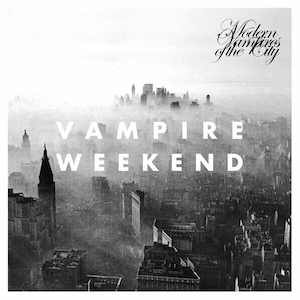
Finally, this is the album that broke me from Swans. It is more than that though. In some ways, it is kind of less, too.
I’ve mentioned indie rock several times throughout this piece, but I don’t have a specific album to fill that void. I don’t know what it would be, where I first heard something labeled as nebulously as ‘indie’ or ‘alternative.’ Somewhere between grunge, the local alt-rock radio station, Weezer, Pixies, Modest Mouse, and Bright Eyes, my enjoyment of indie rock solidified. Hell, I might even like Vampire Weekend‘s self-titled debut more than Modern Vampires In The City, but this album bridged the gap from nihilism to cautious optimism for me as I turned 30. Since I am about to turn 40, this seemed like the right time to reflect on this album and aging, while also having a stellar example of indie rock on this list.
I was in a long-term relationship with someone who would later become my spouse. We had upgraded from a shitty apartment to renting a shitty house. Our roommates were starting to leave, and some sense of domestication and a weird interest in lawn care and grilling started to take hold. With that feeling comes a loss of the wilder, freer days of youth. Vampire Weekend were experiencing that at the same time. Modern Vampires Of The City is a coming of age album for 30-somethings. ‘You oughta spare your face the razor, because no one’s gonna spare their time for you,’ Ezra Koenig sings, ‘you oughta spare the world your labor, it’s been 20 years and no one’s told the truth,’ cutting into my soul with a neurosurgeon’s precision.
The songwriting is balanced with grace and heart, musically and lyrically, as layered vocal harmonies and tender tunes carry the chorus. The summer vibes and bouncier beat of “Unbelievers” is like an atheist anthem, harkening back to their tried-and-true indie pop hooks with more mature lyrics. Two tracks in sold me on the album, along with the single “Diane Young,” but songs like “Step” say shit like, ‘wisdom’s a gift, but you trade it for youth/age is an honor; it’s still not the truth‘ slapped me in the ears with ideal expressions of how I felt leaving my 20s. Then there is “Hannah Hunt,” one of my favorite break-up songs of all time. It is quirky, layered, builds slowly, and can wrench your heart in two if you let it. This is the best song Vampire Weekend has ever written.
The rest of the album contains a seemingly endless amount of oddball textures that juxtapose against Paul Simon-indebted melodies and lyrical cleverness, complete with Brian Eno-influenced production. Themes remain consistent, if not sometimes sillier (“Finger Back”), but overall, this is still a wonderful indie rock/indie pop album that landed in my life at the right time.
I don’t know if there will be an album to help me transition into this next decade. Beth Gibbons‘s Lives Outgrown comes close, but also feels older than me. It really doesn’t matter, anyway. The experience of life is unpredictable, and looking for patterns only reinforces biases. You can form your own narrative and your own world building where you are the playable character, but you are someone else’s NPC, someone else’s antagonist, You can throw your hands up and be indifferent about everything. You can choose a steady guide in some celestial voice. If you chose not to decide, you still have made a choice. You can choose to not be a Rush fan. I don’t believe in free will, anyway. What I do believe in is the power of music. I know it keeps me sane, and it keeps me curious, mind engaged in each new album, every new discovery a mental and psychological act of resistance to complacency, to banality, and an act of hope, resilience against the worst impulses of our nature, to, instead of doing harm, take time to contemplate, to rage, to vibe, to dance, to cry, and to fall in love again. May you and I never lose that spark for childlike wonder and discovery, no matter how old.
Thank you for reading,
Broc



